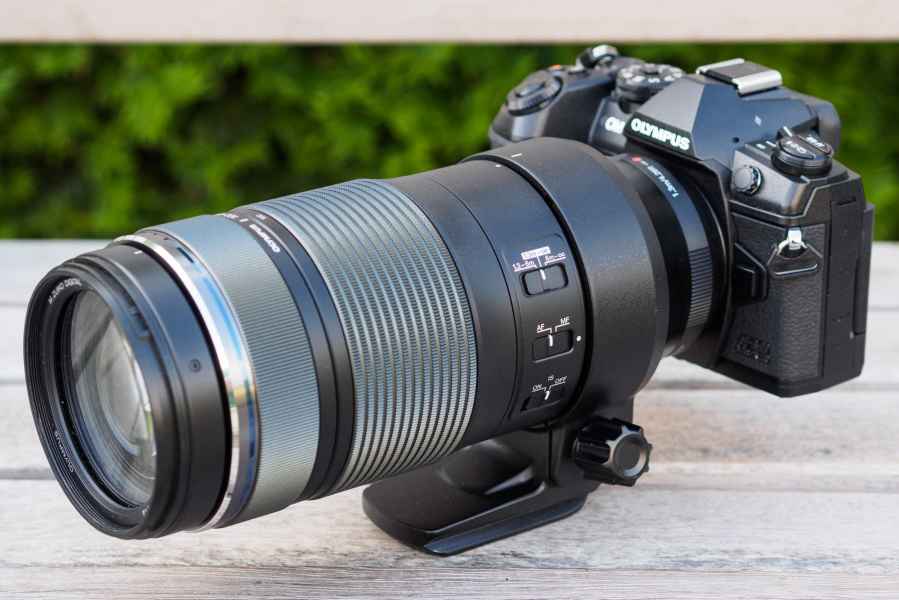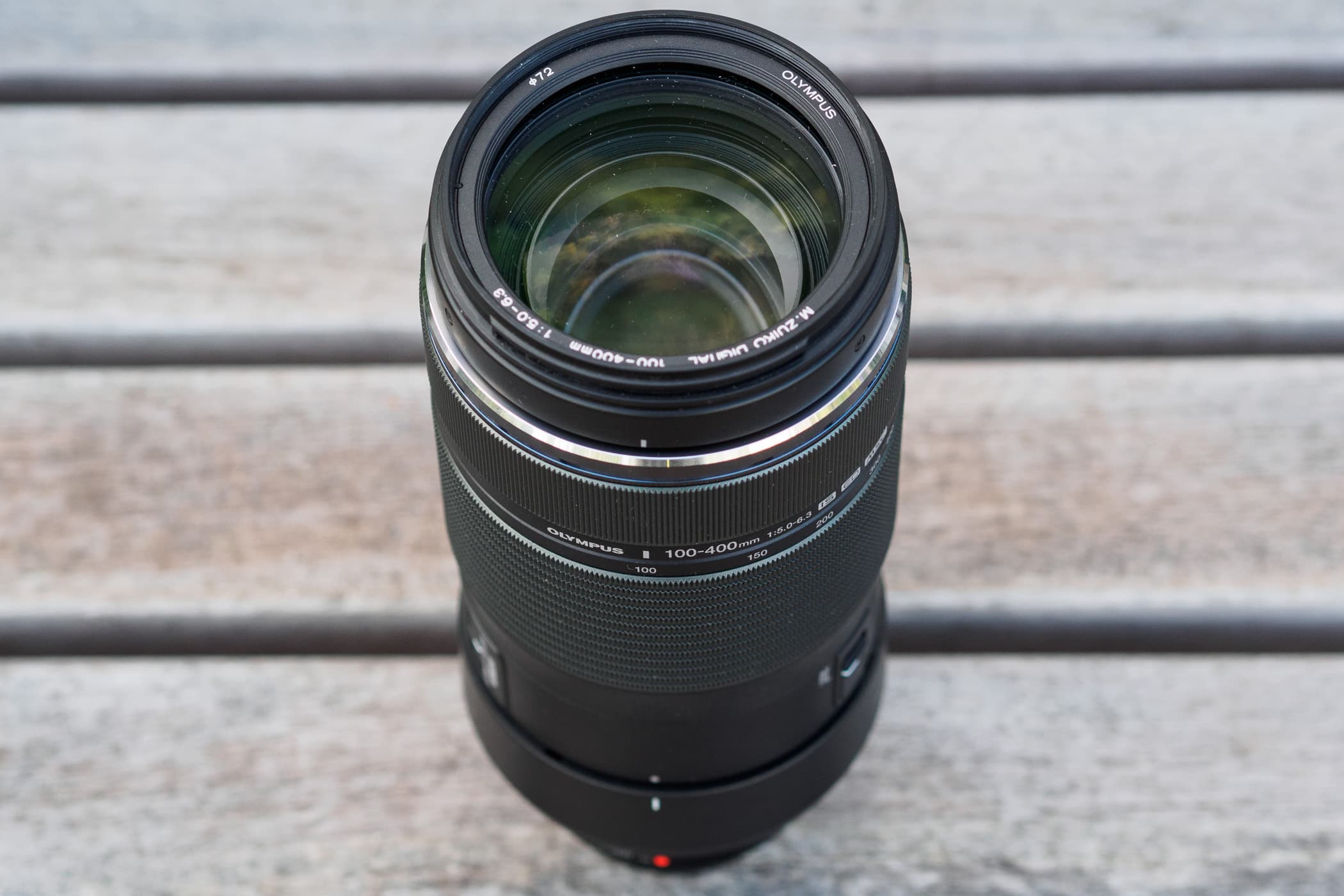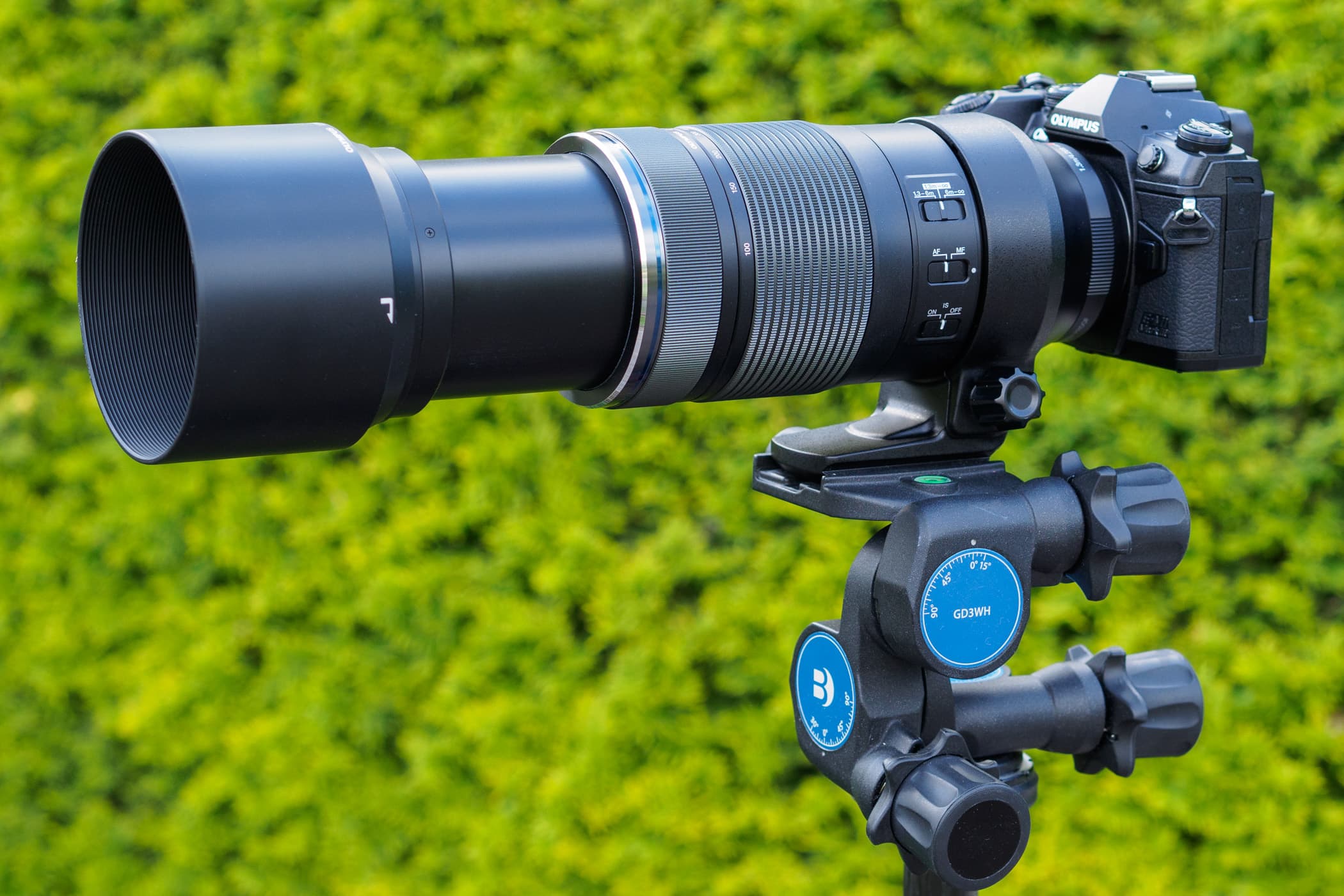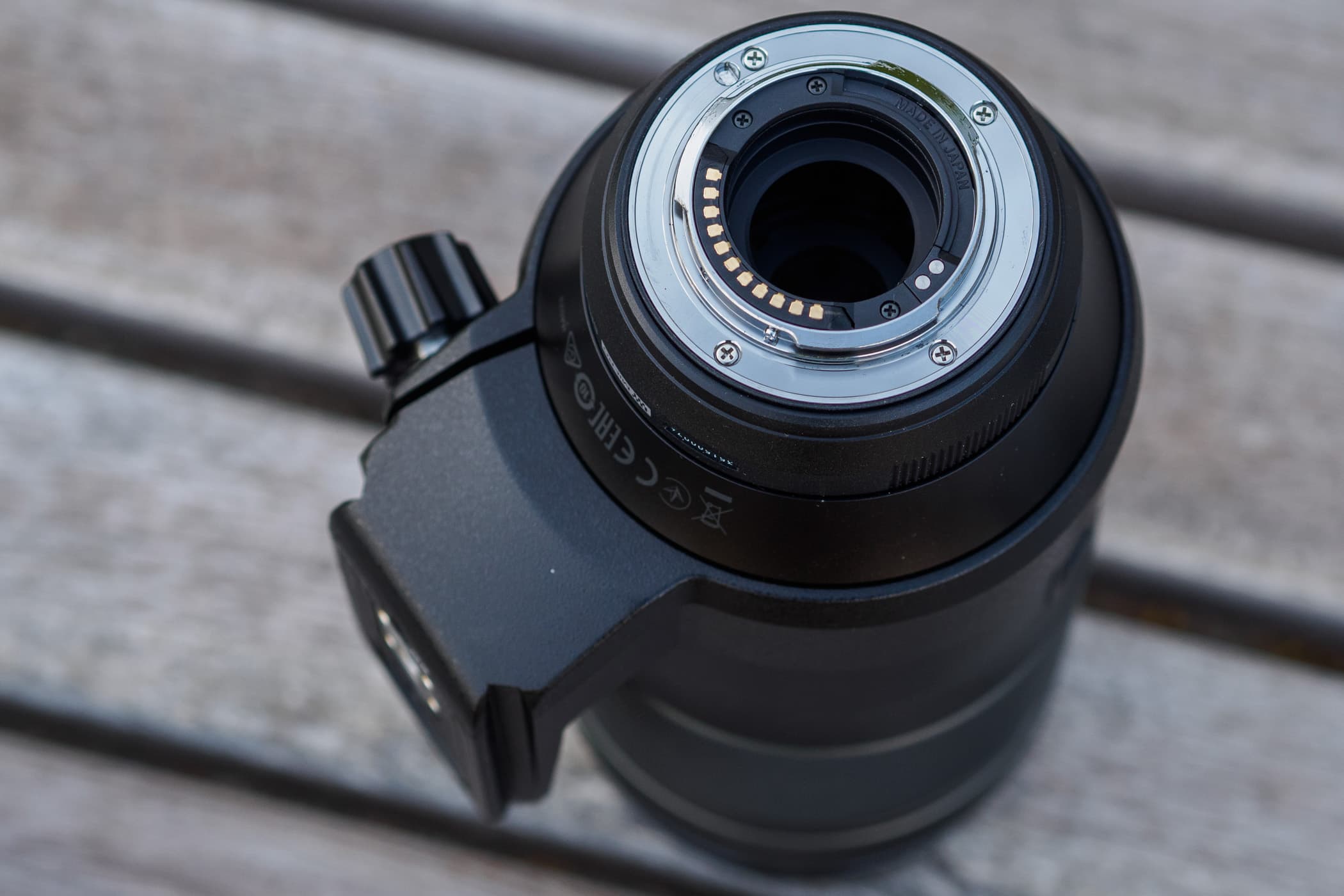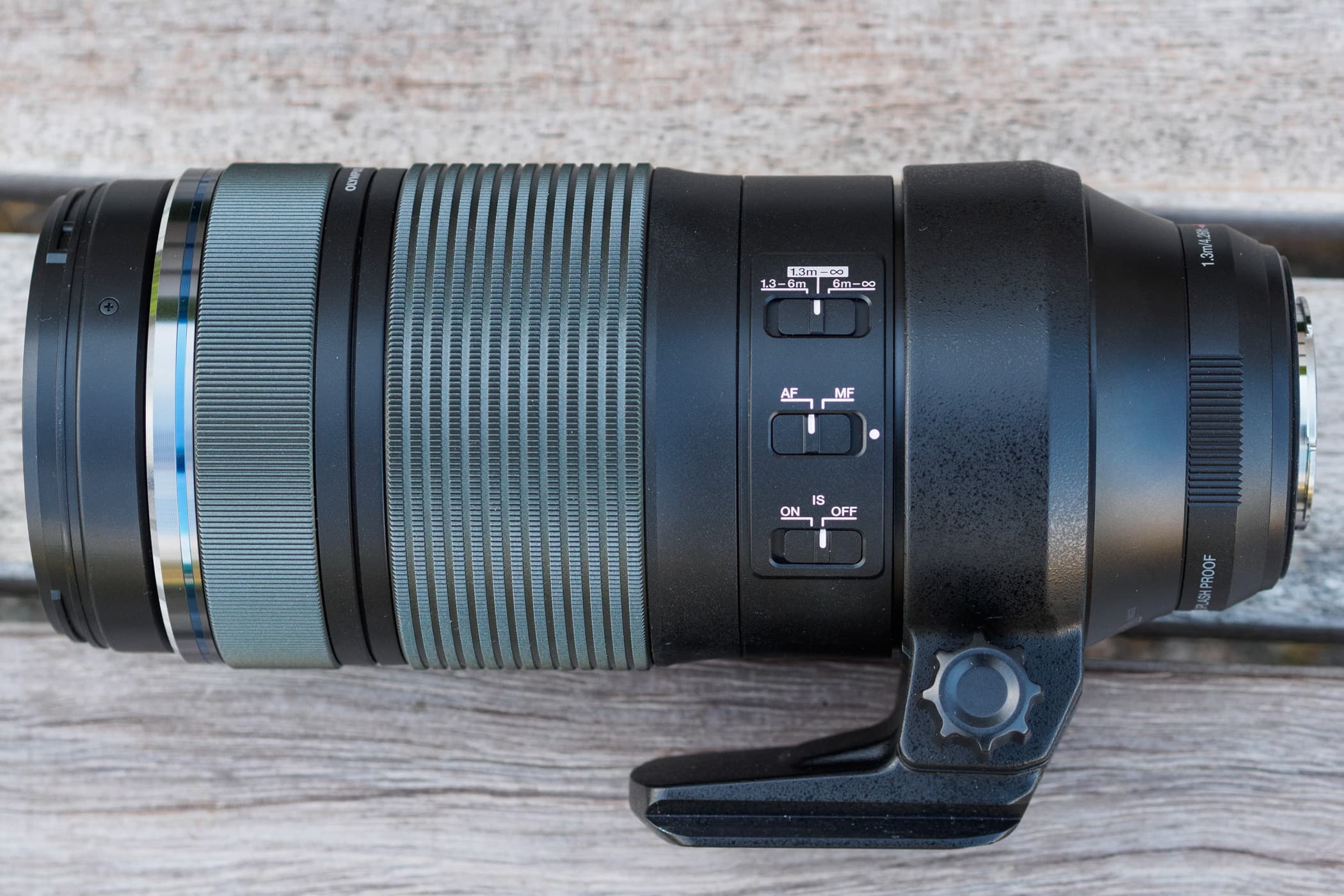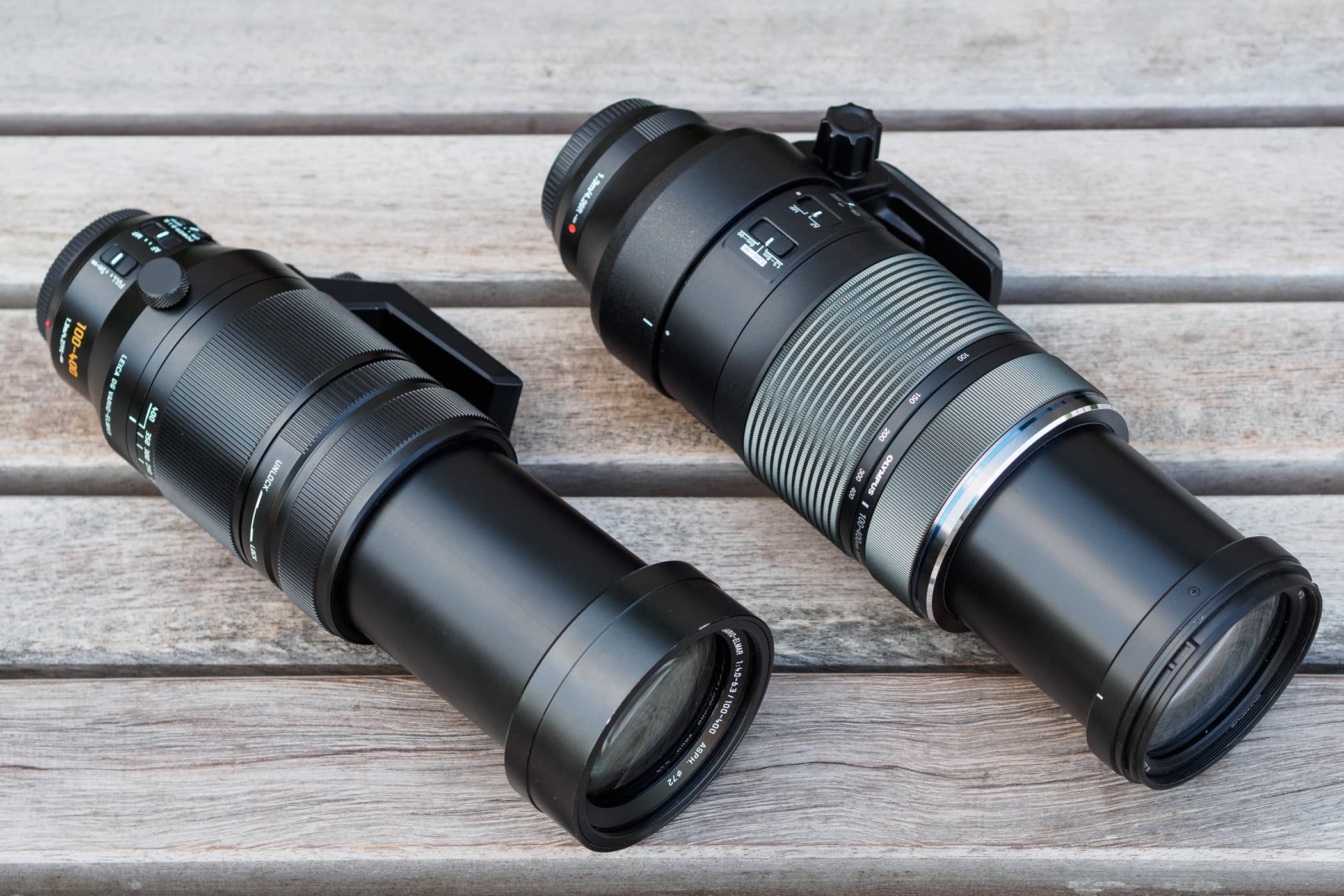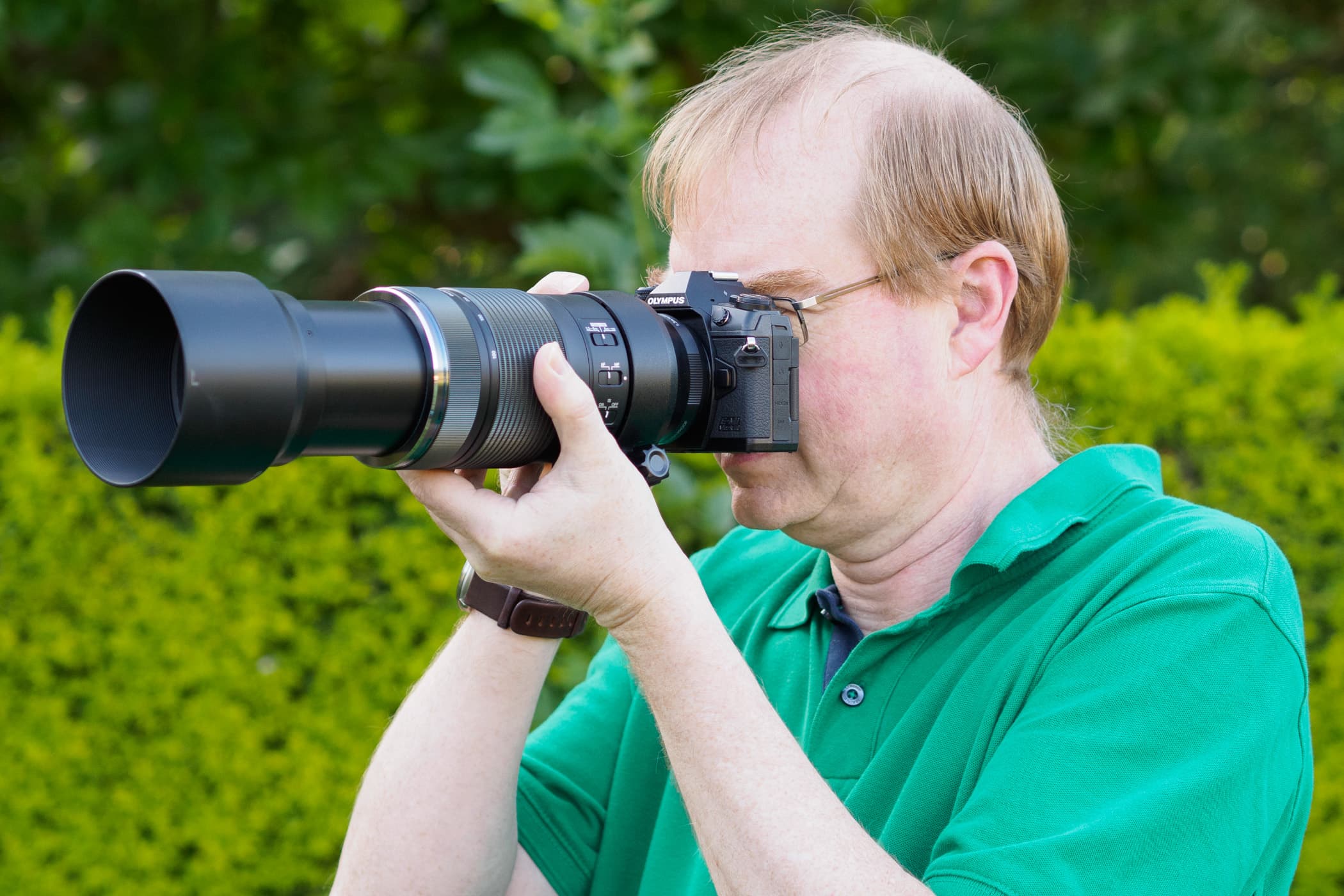Amateur Photographer verdict
A capable lens overall, excellent in bright light, is enhanced with certain accessories. However, it is bulky and ease of use suffers in some modes.- Sharp optics
- Robust, weather-sealed construction
- Handy close focus capability
- Arca swiss compatible tripod mount
- Large and heavy compared to its Panasonic equivalent
- Awkward handling in some modes
- Slow maximum aperture demands use of high ISOs
With a 100mm lens on the MFT format giving a view equivalent to 200mm on full-frame, the smaller format means telephoto lenses are effectively longer but also more portable – a clear benefit to action and wildlife photographers, at least.
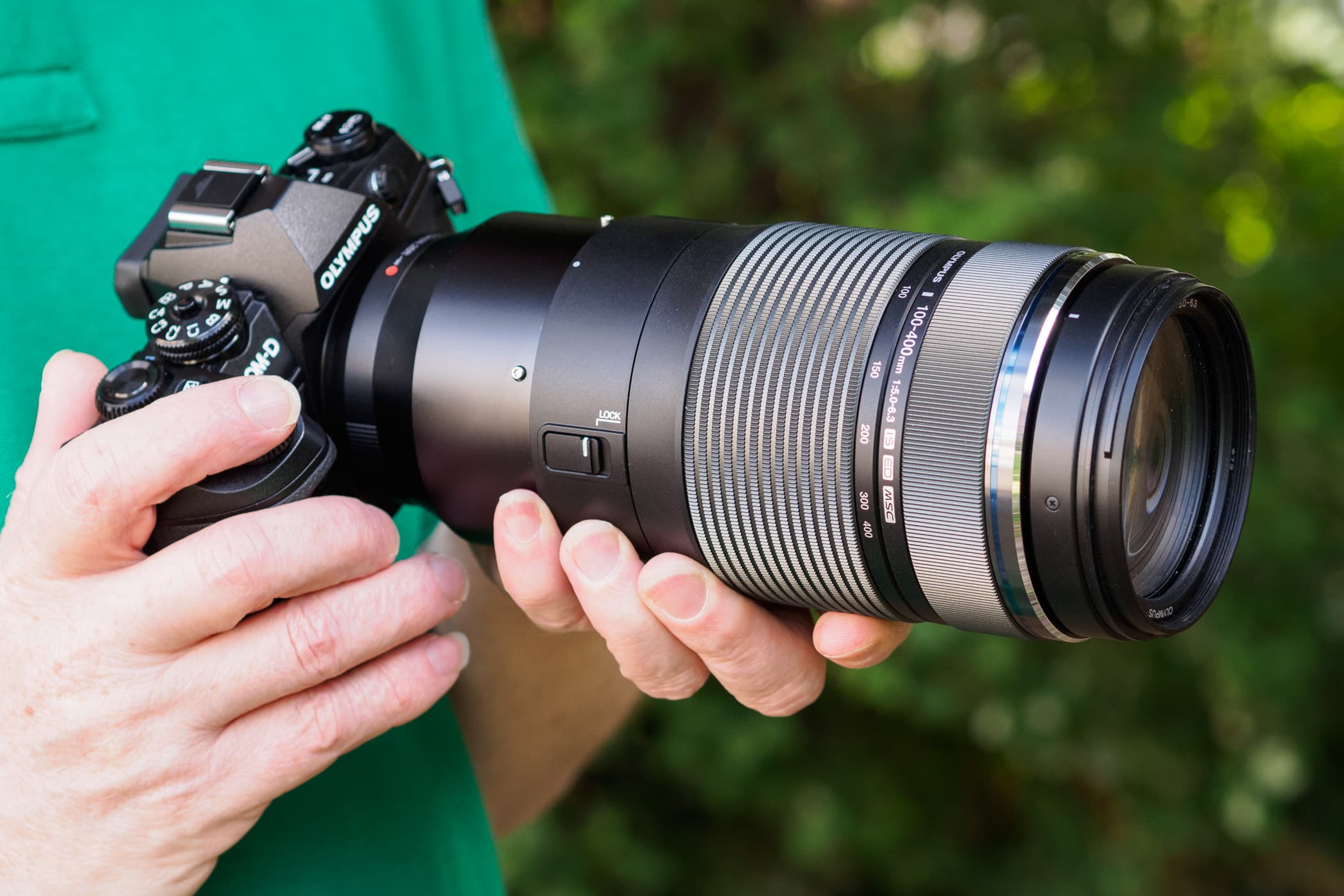
The OM System/Olympus M.Zuiko Digital ED 100-400mm f/5-6.3 IS gives an equivalent view of a 200-800mm lens in the 35mm format and it weighs in at 1120g; a low weight considering its incredible telephoto power. It’s an optically stabilised ultra-telephoto zoom that joins the brand’s mid-range line-up, rather than its premium Pro series, and sells at about $1,500/ £1,169.

There’s already a highly regarded telezoom of this range for MFT cameras, in the shape of the Panasonic Leica DG Vario-Elmar 100-400mm /4-6.3 Asph Power OIS which sells at $1,597 / £1,071. Given the lens’s slower maximum aperture, you’d expect a more portable alternative from OM Digital here. In fact, it’s significantly larger and heavier. It weighs in at 1120g and measures 206mm when retracted, compared with the Panasonic lens at 951g and 172mm long.
However, the lens’s trump card might be its compatibility with OM System/Olympus teleconverters. Fit the MC-14 which sells at $350/£299 and it becomes a 140-560mm f/7.1-9, and with the MC-20 attached, priced at $430/£399, it’s a 200-800mm f/10-13.
With its credentials and potential, the M.Zuiko Digital ED 100-400mm f/5-6.3 IS is an intriguing lens and a low cost option to other OM System telephotos such as the incredible $7500/£6500 M.Zuiko Digital ED 150-400mm f/4.5 TC1.25x IS Pro, but is it worth buying?
OM System/Olympus M.Zuiko Digital ED 100-400mm f/5-6.3 IS: Features
Long telezooms tend to be optically complex, and OM System has used 21 elements in 15 groups, including four Extra-low Dispersion (ED), two High Refractive Index (HR), and two Super High Refractive Index (Super HR) glass elements to prevent optical aberrations. OM System’s ZERO coating reduces flare and ghosting, and the diaphragm employs nine rounded blades to give a near-circular aperture, in a bid to provide attractive bokeh.
While this is OM System’s third IS lens, it is unique among the firm’s other optics in not supporting Sync IS; in which the in-lens and in-body stabilisation systems work together for maximum effect. Instead, when the lens IS is enabled, the camera’s in-body system is automatically disabled (although confusingly, still appears active on the c Quick Control Panel). With such a long telephoto, the optical stabilisation will do much of the work anyway, to mitigate this loss.
OM System has released firmware updates for select camera models (E-M1X, E-M1 Mark III, E-M1 Mark II and E-M5 Mark III), primarily to add support for focus stacking with the 100-400mm. Interestingly, they also enable rolling motion around the lens axis to be corrected by the camera’s IBIS.
This is good news to videographers, but unlikely to affect stills photography so much, as roll movement only really causes blur at much slower shutter speeds than one would use hand-held with this lens. For the latest OM System firmware downloads visit this page.
Indeed at 800mm equivalent the optical stabilisation has to work hard to counteract the effects of camera shake, and as a result is rated to 3 stops, dropping to 2 stops with a teleconverter fitted. This might sound meagre to OM System/Olympus users accustomed to getting considerably more from their camera’s in-body IS. Bear in mind, though, that with most subjects for this lens’ use, faster shutter speeds will be maintained to prevent motion blur in any case.
As usual for a large telephoto, the 100-400mm includes a sturdy metal tripod mount. It rotates freely and can be locked in any position, with index markings (but not click-stops) at every 90°. In a particularly welcome move, an Arca Swiss-type dovetail profile means it can be clamped directly onto many tripod heads, while the collar can also be removed for hand-held shooting. However, some users may prefer the Panasonic lens’s easily removable, low-profile tripod shoe.
The lens has a minimum focus distance of just 1.3m, providing a handy 0.57x equivalent magnification. This facilitates interesting close-ups of subjects that might prove skittish if approached with a shorter macro lens. Filter users will find a 72mm thread surrounding the front element, while a deep bowl-shaped plastic hood is supplied in the box.
OM System/Olympus M.Zuiko Digital ED 100-400mm f/5-6.3 IS: Build and handling
As befits its mid-range status, the 100-400mm employs plastic rather than metal for much of its outer barrel. But it’s still perfectly nicely made, and OM System says that it’s built with the same standard of dust, splash and freeze-proofing as its Pro-series lenses, which have proven to be extremely robust.
Weighing in at about 1.4kg with the tripod mount and hood attached, and measuring over 20cm in length, this is one of the largest and heaviest Micro Four Thirds lenses. As a result, it feels distinctly front-heavy even on high-end Micro Four Thirds cameras.
Users of the smaller OM-D E-M10 and E-M5 bodies will find themselves supporting the lens entirely with their left hand, and will benefit significantly from using an add-on grip for their camera if possible. Even E-M1-series users will likely appreciate the extra purchase afforded by a vertical grip. To me, the smaller and lighter Panasonic version matches the Micro Four Thirds philosophy better.
Thankfully, the lens still handles quite well. The zoom ring rotates smoothly through 90°, with no change in resistance at any point. This is much better than the rather ‘sticky’ zoom found on its Panasonic rival when it comes to making fine adjustments. I had no problem with zoom creep, but a switch allows locking at the 100mm position anyway, with a white inlay to show its status. The front of the lens extends by approximately 6cm when zoomed to 400mm.
On the left side of the barrel is a conventional control panel, with a set of well-spaced switches for limiting the autofocus distance range (1.3m to 6m, 6m to infinity, or full), selecting between auto and manual focus, and turning IS on or off. Unfortunately, these switches get hidden awkwardly under the tripod foot when rotated for shooting in portrait format. The Panasonic lens works better in this regard, as its control panel is located on its rotating collar.
OM System/Olympus M.Zuiko Digital ED 100-400mm f/5-6.3 IS: compared to Panasonic 100-400mm
Here’s a size comparison between the OM System M.Zuiko Digital ED 100-400mm f/5-6.3 IS and the Panasonic Leica DG Vario-Elmar 100-400mm f/4-6.3 Asph OIS. You can see just how much bulkier the OM System lens is, despite its two-thirds stop slower aperture at 100mm. In its retracted position, it’s 3.4cm longer and 3.4mm larger in diameter (note this doesn’t take into account the tripod shoe).
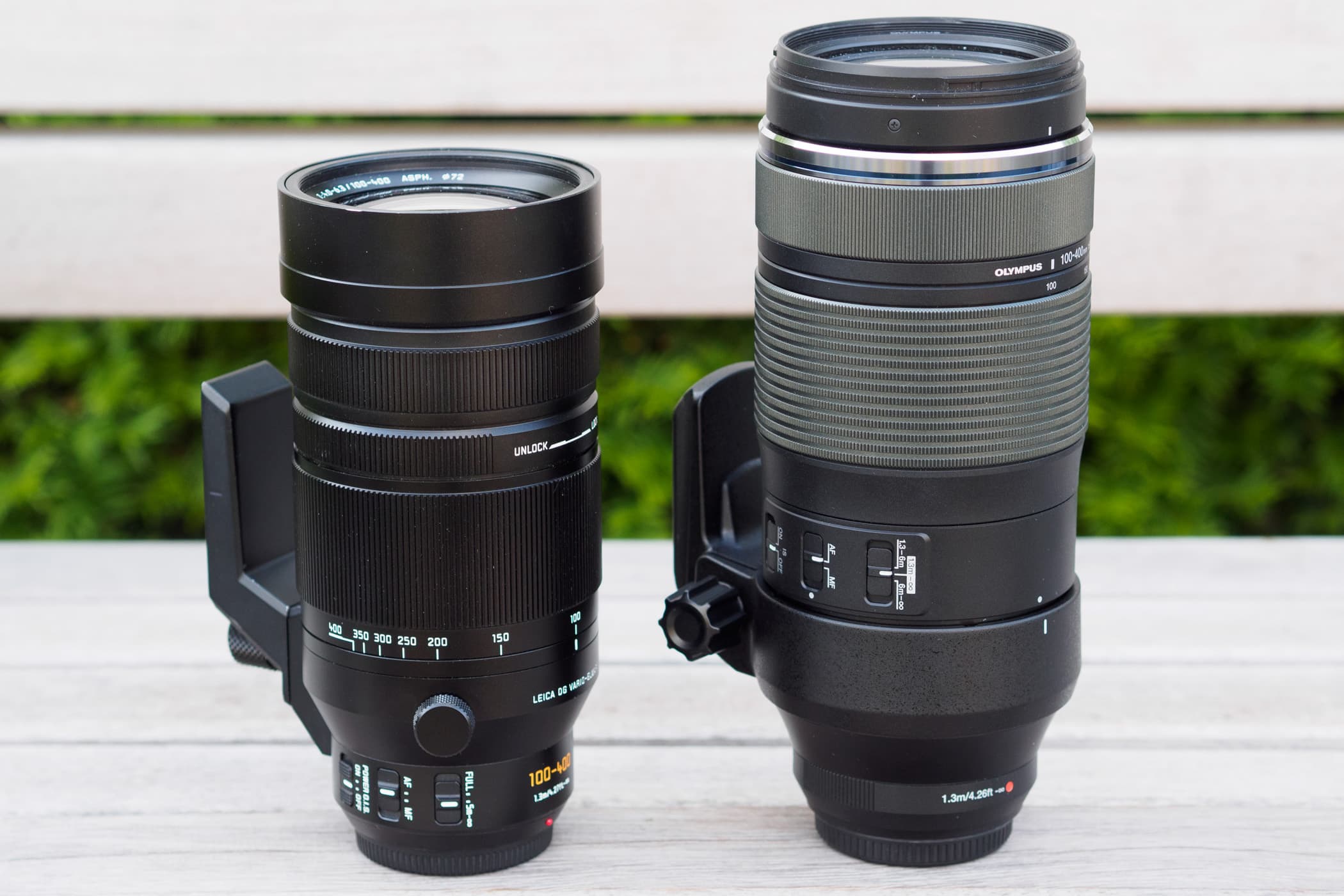
The OM System/Olympus lens is also much heavier. On its own with no accessories it weighs 169g more (1120g vs 951g), but if you factor in the caps, hood and tripod mount, the difference in what you’ll actually be carrying around amounts to almost 300g (1405g vs 1114g).
Each lens has its own pros and cons. The Panasonic has a low-profile tripod shoe that can be easily unscrewed when the lens is mounted on the camera, a zoom lock that can be engaged at any focal length, and a control panel that rotates to stay accessible when shooting on a tripod in portrait format.
It also has a shallow sliding built-in hood, with a somewhat impractical clamp-on extension. The OM System/Olympus lens has a smoother zoom ring, a conventional hood (which incidentally also fits the firm’s 40-150mm f/2.8 zoom), and will attach directly to many tripod heads thanks to its Arca Swiss-compatible mount.
OM System/Olympus M.Zuiko Digital ED 100-400mm f/5-6.3 IS: Autofocus
In terms of autofocus, the 100-400mm behaves much as we’d expect for a modern lens. With an internal-focus design powered by a stepper motor, AF is fast, silent and accurate, especially if you’re shooting static or slow-moving subjects. The key point to appreciate is that with such a long telephoto, depth of field is extremely limited, so it’s essential to position a fine focus point exactly where you need it, to ensure the subject is properly sharp. But even this can be challenging when working hand-held at full telephoto, as the IS can struggle to stabilise the viewfinder image sufficiently.

When it comes to keeping focus on moving objects, you’ll likely be limited by the capability of your camera, which varies widely between Micro Four Thirds bodies. Using the phase detection-equipped Olympus OM-D E-M1 Mark III, I found the lens was perfectly capable of tracking focus on large, relatively predictably-moving subjects such as trains or planes, but struggled with smaller, more erratic wildlife. Here the slow maximum aperture clearly does it no favours compared to OM System’s 40-150mm f/2.8 and 300mm f/4 Pro-series telephotos. On the older, contrast detection-based E-M5 Mark II, I found it was only able to keep up with relatively slow-moving subjects, and the first frame in a burst was almost invariably out of focus.
OM System/Olympus M.Zuiko Digital ED 100-400mm f/5-6.3 IS: Performance
Assessing the OM System 100-400mm for image quality can be a difficult task, because its performance is so intimately tied to the fact that long telezooms are most likely to be used outdoors to shoot moving subjects, such as wildlife, sports, or vehicles. This generally requires fast shutter speeds to combat motion blur, which coupled with the relatively small maximum aperture, means that you’ll often need to use high ISOs, even in bright sunlight.

Lock the lens down on a tripod and point it at a brick wall using a low ISO, and you’ll find it’s capable of delivering impressively sharp images wide open. As tends to be the case with telezooms, it’s slightly weaker at 400mm than at 100mm, particularly towards the corners of the frame, where it benefits from being stopped down to f/8. Like all Micro Four Thirds lenses, pixel-level sharpness visibly deteriorates if you set the aperture much smaller than this, due to the inevitable onset of diffraction.

Under controlled indoor tests I found the optical stabilisation worked pretty well, giving a good percentage of usable images at 1/25sec at 100mm, or 1/100sec at 400mm. This matches OM System’s claimed 3 stops, and wasn’t any better or worse than its Panasonic rival. But shooting outdoors can be a different proposition, particularly on a windy day that’s buffeting your lens as well as your subject. At full zoom, I often observed the IS really struggling to stabilise the viewfinder image.

Once you start shooting real-world subjects, you’ll rapidly find that with its small aperture and demand for fast shutter speeds, this is an incredibly light-hungry lens. Even in bright sunlight, you’ll generally need to boost the ISO a couple of stops. When light levels drop lower, for example at dawn or dusk or on a cloudy day, you’ll quickly find yourself the wrong side of ISO 3200. This really isn’t Micro Four Thirds’ comfort zone, with noise and noise reduction robbing images of detail.

When everything comes together, though, the lens is capable of delivering excellent results. This is particularly so in good light and at relatively close range, where you can fill the frame with a subject without cropping, and aren’t affected by atmospheric distortion. So it’s great for subjects such as garden birds, or as a pseudo-macro for shooting insects.
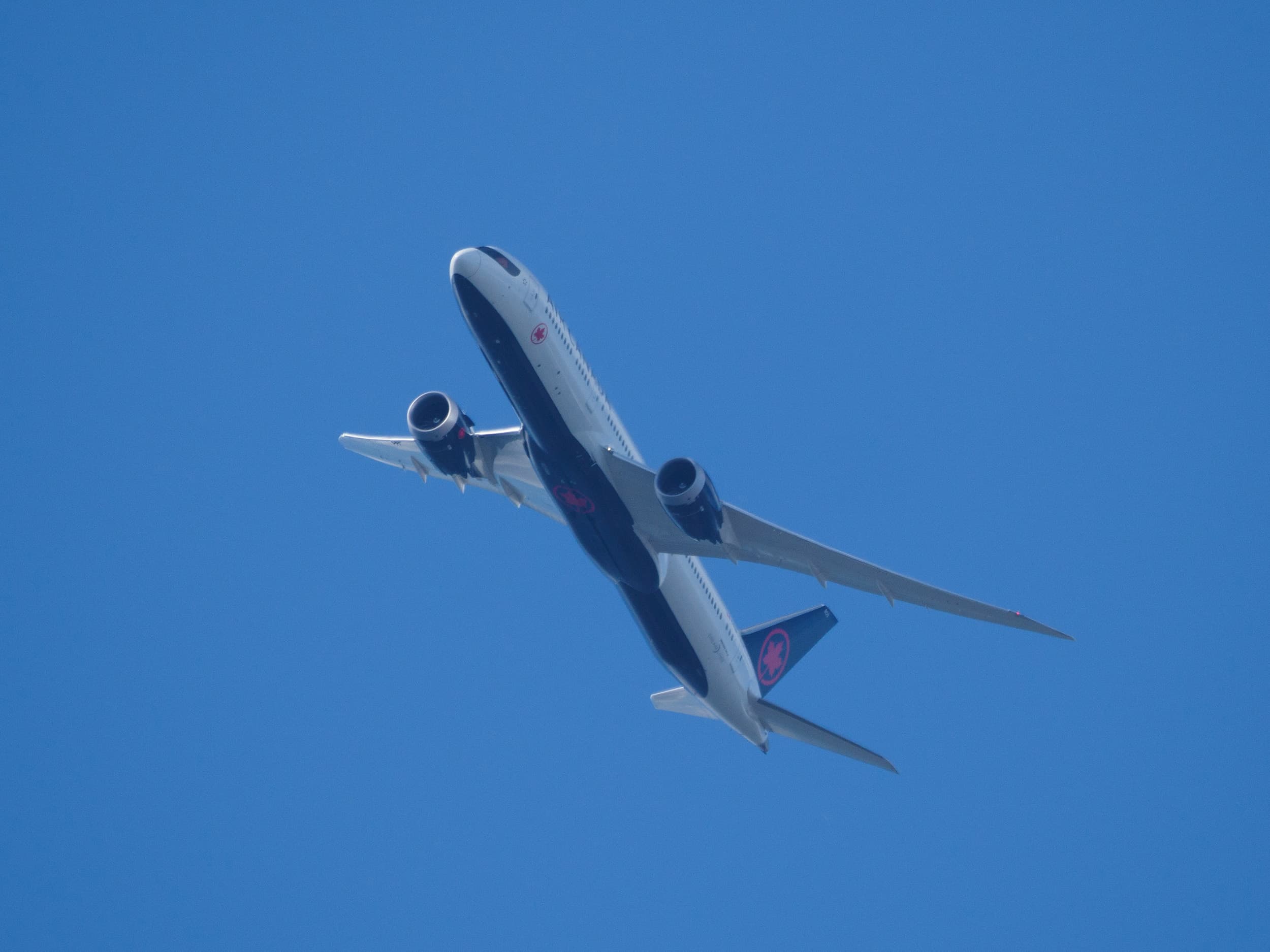
But I was less happy with the images I got in even moderately low light, where the requirement for very high ISOs means that it’s difficult to capture much fine detail. How much this will matter to you depends on how you assess your files: if you demand sharp, noise-free results at 100% onscreen, forget about it. But if you regard an image as a whole instead of pixel peeping, you might well be happier.
OM System/Olympus M.Zuiko Digital ED 100-400mm f/5-6.3 IS: Use with teleconverters
Potentially one of the OM System’s/Olympus’ 100-400mm’s biggest selling points is its compatibility with the firm’s MC-14 and MC-20 teleconverters. These bring extraordinary telephoto reach, equivalent to 1100mm and 1600mm at full telephoto, respectively.
The catch lies with the very small apertures: f/7.1-9 with the MC-14, and f/10-13 with the MC-20. But this doesn’t come with the same operational limitations that you’d get with DSLRs: the viewfinder image remains bright and clear, and autofocus still works remarkably well. In general, you’ll run out of sufficient light to get a decent image long before the AF fails.
Instead, the key question is whether you can actually get any more detail using a teleconverter, compared to simply cropping and enlarging an image taken using the lens alone. The problem lies with diffraction: optical calculations suggest that theoretically, all you’re really doing is magnifying the Airy blur disc. At which point you’re just making life harder for yourself, for no clear gain.

In practice it’s possible to get quite credible results with the MC-14, as long as you keep the aperture wide open and shoot in bright sunlight. However it’s pretty much essential to use a monopod to steady the lens, and preferably a tripod. But as predicted, close examination of the images reveals little in the way of really fine detail.

Switching to the MC-20 is definitely a step too far. It does provide ludicrous reach, and at full zoom you can almost fill the frame with the moon. But the lens becomes extremely difficult to handle, and the tiny aperture means there’s precious little fine detail to be seen. As it turns out, ye cannae change the laws of physics.
OM System/Olympus M.Zuiko Digital ED 100-400mm f/5-6.3 IS: Verdict
The OM System/Olympus M.Zuiko Digital ED 100-400mm f/5-6.3 is a ultra-telephoto zoom that handles quite well although there are some niggling points. For example, the lens’ various switches are more awkward to get at when shooting in the portrait format.
The OM System/Olympus lens also compares less favourably with its direct rival, the Panasonic Leica DG Vario-Elmar 100-400mm /4-6.3 Asph Power OIS. It’s two-thirds of an f/stop slower than its rival at 100mm, it is considerably larger and heavier and lacks some useful features found on the Panasonic. However, both telephotos make our elite selection of the Best Zoom lenses for Micro Four Thirds.
On the upside, the M.Zuiko Digital ED 100-400mm f/5-6.3 can produce really attractive results, especially in bright sunlight. Its usability with the MC-14 teleconverter wIll prove alluring to some buyers. With this accessory the lens becomes a 140-560mm f/7.1-9 which equates in the 35mm format to a very powerful 280-1120mm zoom. Overall, this is a capable lens, although its bulk is a negative when the strength of the Micro Four Thirds format is portability.


